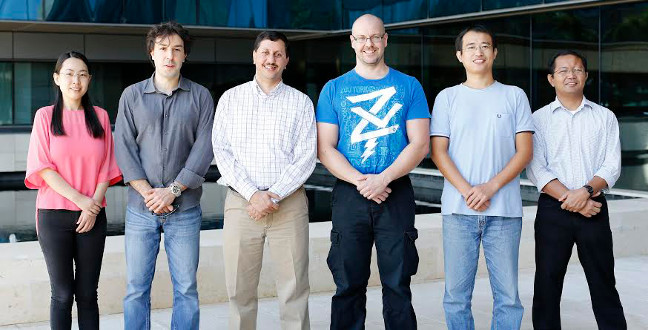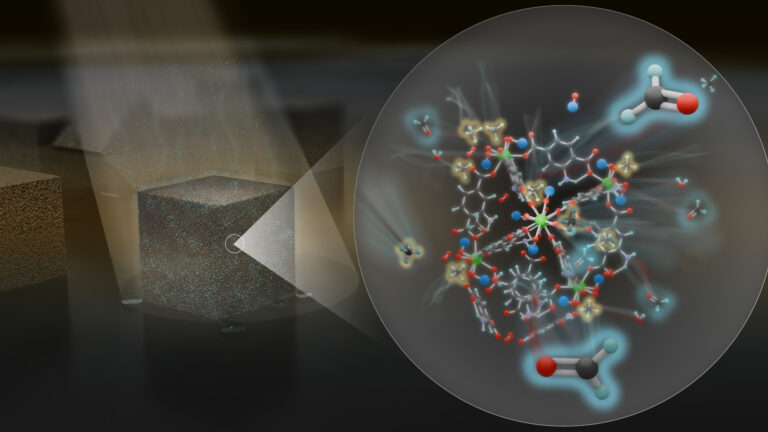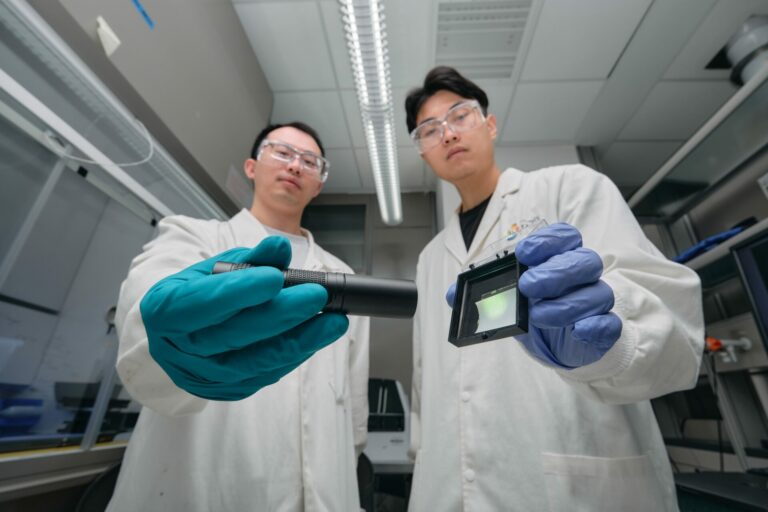Chemistry
Hope of a silver bullet
A single photon can free two electrons within a nanocrystal of silver sulfide, revealing its promise as a solar cell material.


Transmission electron microscopy shows individual silver sulfide quantum dots (left). When photons with a high enough energy hit the dot (middle), they can excite two electrons at once (right).
© Omar Mohammed et al/KAUST
Tiny light sensitive crystals, known as quantum dots (QDs), are promising components in next-generation solar technology but need to improve their efficiency to compete with traditional energy sources. KAUST researchers are looking to better understand charge collection processes in QDs which would underpin better power conversion.
Omar Mohammed of the Solar and Photovoltaics Engineering Research Center and colleagues investigated QDs made from silver sulfide, which are more stable and less toxic than many other QDs.
As tiny semiconductor crystals, QDs are small enough for quantum effects to influence their properties, particularly their interaction with light. They are also relatively inexpensive, and the wavelength of light they absorb can be controlled easily by adjusting their size.
Conventional photovoltaic cells contain semiconductors that typically generate one electron for every particle of light, or photon, that they absorb. Occasionally, a single high-energy photon can free two electrons, through a process called multiple-exciton generation (MEG). The quantum effects at work in QDs allows them to achieve MEG using lower-energy photons, making them potentially very efficient at converting light into electricity.
Mohammed and colleagues found that relatively low-energy photons could exhibit this MEG process within the silver sulfide QDs1. They also recorded the effects of photons with higher energies to find that they could release even more electrons.
However for the QDs to create a useful electric current, these electrons must be gathered at an electrode before they fall back into the ‘hole’ left behind when they are excited.
“Charge collection is one of the key processes that control the overall power-conversion efficiencies of photovoltaic devices,” says Mohammed. “If the lifetime of the separated electron-hole is long enough, it increases the possibility of charge-carrier extraction in the device.”
The researchers discovered that in silver sulfide QDs, the two freed electrons can have quite different lifetimes, which will have implications for charge-carrying efficiency. Furthermore, using smaller QDs shortened the lifetimes of these electrons, but dissolving the dots in electrically-polarized solvents such as ethylene glycol helped to generate more of the weakly-bound electrons that remain free for longer.
The next step for Mohammed and his colleagues is to build a working solar cell that can capture the excited charge carriers from the silver sulfide QDs.
References
- Sun, J., Yu, W., Usman, A., Isimjan, T. T., DGobbo, S., Alarousu, E., Takanabe, K. & Mohammed, O.F Generation of multiple excitons in Ag2S quantum dots: single high- energy versus multiple-photon excitation. Journals of Physics and Chemistry Letters 5, 659−665 (2014).| article
You might also like

Chemistry
Maximizing methane

Chemistry
Beating the dark current for safer X-ray imaging

Chemical Engineering
Net benefits for advanced materials design

Chemical Engineering
Ancient architecture inspires a window to the future

Chemistry
Squeezing more from carbon dioxide

Chemistry
Finding catalytic power in unexpected places

Chemistry
Scintillating new X-ray imaging

Chemistry



